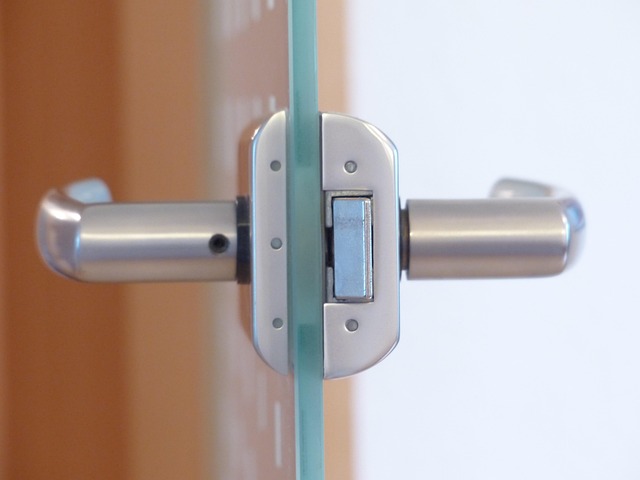When choosing an entry door, consider style, security, and durability. Prepare the frame meticulously for perfect alignment, preventing warping. Install the door and hardware securely, focusing on child safety. Seal and insulate for energy efficiency, reducing heating/cooling costs. Perform final checks for security and functionality, including child-proof locks.
Installing an entry door is a great way to enhance your home’s security and energy efficiency. This step-by-step guide provides a straightforward approach to ensuring lasting durability. From selecting the ideal door for your needs, including weatherproofing measures, to final safety checks, each stage is crucial. Learn how to prepare the doorway and frame correctly, install hardware seamlessly, and seal for optimal insulation. With these tips, you’ll have a robust, child-friendly entrance that stands the test of time.
Choose the Right Entry Door for Durability
When selecting an entry door for lasting durability, it’s crucial to choose a style that aligns with your home’s architecture and security needs while considering factors that ensure longevity. Look for doors made from robust materials like solid wood, fiberglass, or steel, which offer superior strength against weather conditions and potential intruders. Additionally, consider energy-efficient models with insulation to maintain comfortable indoor temperatures, reducing heating and cooling costs.
For families with children, opt for a child-friendly design that includes safety features such as secure locking mechanisms and impact-resistant glass. Ensure proper fit and sealing to prevent drafts and unwanted entry. A well-chosen entry door not only enhances your home’s curb appeal but also provides peace of mind, knowing your family is protected within a safe and comfortable environment.
Prepare the Doorway and Frame
Before installing your new entry door, preparing the doorway and frame is a crucial step for ensuring lasting durability. Start by clearing any debris or obstructions from the entranceway, sweeping or vacuuming to ensure a clean space. Then, inspect the existing frame for any damage or rot, repairing or replacing as necessary with weather-resistant materials. This includes tightening hinges and ensuring the swing of the door is balanced. In a child-friendly bathroom design, for example, a well-prepared doorway can accommodate swinging doors without sharp edges or hazards, promoting safety while enhancing overall aesthetics.
Next, measure the opening to ensure the door fits properly. Adjust the frame if needed, using shims to level and square it up. This precise preparation not only ensures your new entry door aligns perfectly but also fortifies the frame against warping over time, contributing to its longevity and structural integrity.
Install the Door and Hardware
After preparing your door frame, it’s time to install the actual door and its hardware. Start by placing the door into the frame, ensuring it sits level and aligned properly. Use shims if needed to adjust any gaps or misalignments. Next, secure the door with hinges, making sure they’re fitted tightly and swinging smoothly. Install a handle and lockset that suits your needs—for a child-friendly bathroom design, opt for easy-to-use, durable hardware that’s suitable for frequent use. Test the door’s operation, adjusting any loose components to ensure a secure fit.
Seal and Insulate for Energy Efficiency
After ensuring a proper fit and alignment, it’s time to seal and insulate your new entry door for maximum energy efficiency. Start by applying a high-quality weatherstripping around the perimeter of the door. This will create a barrier against drafts and prevent air leaks, keeping your home cozy during colder months. Use a door sweep at the bottom of the door for an extra layer of protection.
Next, consider adding insulation to the door frame and the space between the door and frame. Fill any gaps or cracks with caulk or foam insulation to lock in heat (or cool air) and reduce energy costs. This step is particularly important if your home has older doors or drafty frames, making it easier for heated or cooled air to escape. Think of it as an investment in a child-friendly bathroom design—creating a comfortable, energy-efficient space for everyone inside your home.
Final Touches and Safety Checks
After completing the installation, it’s time for the final touches and safety checks to ensure your new entry door is secure and functional. Begin by inspecting all hardware, including handles, locks, and hinges, making sure they are properly aligned and operating smoothly. Any loose or damaged components should be replaced immediately. Next, test the door’s stability by closing it firmly and ensuring it swings open and shut effortlessly without any catch or bind.
For a child-friendly bathroom design, consider additional safety measures around the entry door. Install a child-proof lock to prevent accidental exits and ensure privacy when needed. Check that the door frame is level and secure, and all edges are smoothly finished to avoid any potential hazards. A final visual inspection for any gaps or misalignments will guarantee a tightly sealed, durable entry point that keeps both your home safe and your family comfortable.
Installing a durable entry door is a worthwhile investment that can enhance your home’s security and energy efficiency. By following these simple steps, from selecting the right door to final safety checks, you’ll ensure a robust and long-lasting entrance. Remember, proper preparation and attention to detail are key to achieving both functionality and aesthetics, making your space, whether it’s a child-friendly bathroom or any other area, more welcoming and efficient.
